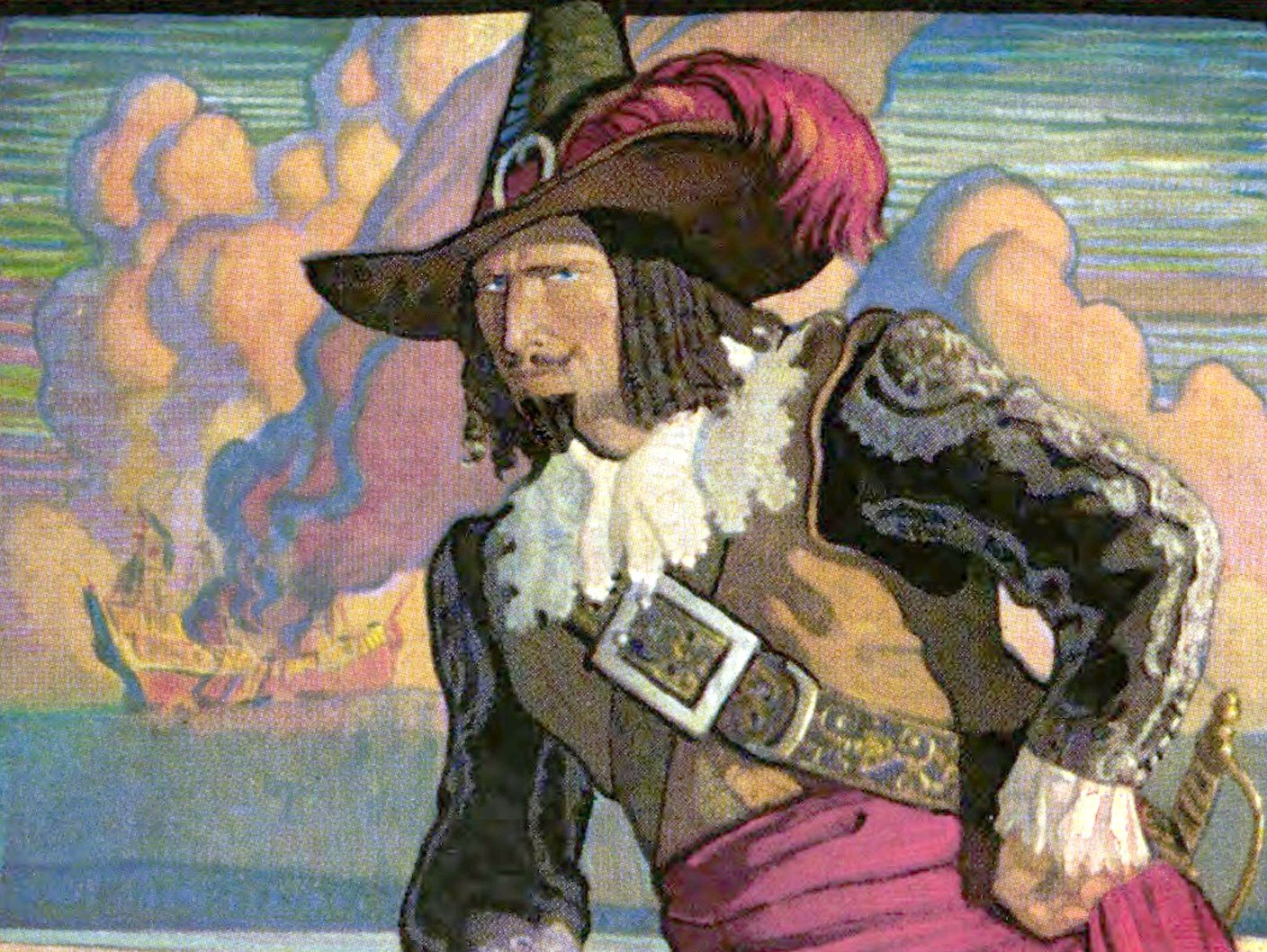
Blackbeard the Pirate
Probably, the most dangerous pirate that lived during colonial time was Edward Teach who was also known as Blackbeard. Very little is known about his youth except that he was born in Bristol, England around 1680. Teach was tall and lean with a long black beard and long black hair. Historians tell us that at some point Teach became a professional soldier, fighting from 1702 to 1713 in Queen Anne's War. Then, when the war drew to a conclusion Blackbeard became a pirate. In 1716, he joined the crew of legendary pirate Benjamin Homigold. It wasn't long afterward that Homigold gave Blackbeard his own ship. The 2 ships put fear in every merchant captain who sailed from South America to New England. Then, just as their enterprise was thriving, Homigold decided that he no longer wanted to be a pirate. Soon after, he asked for a king's pardon, and was given one in 1717.
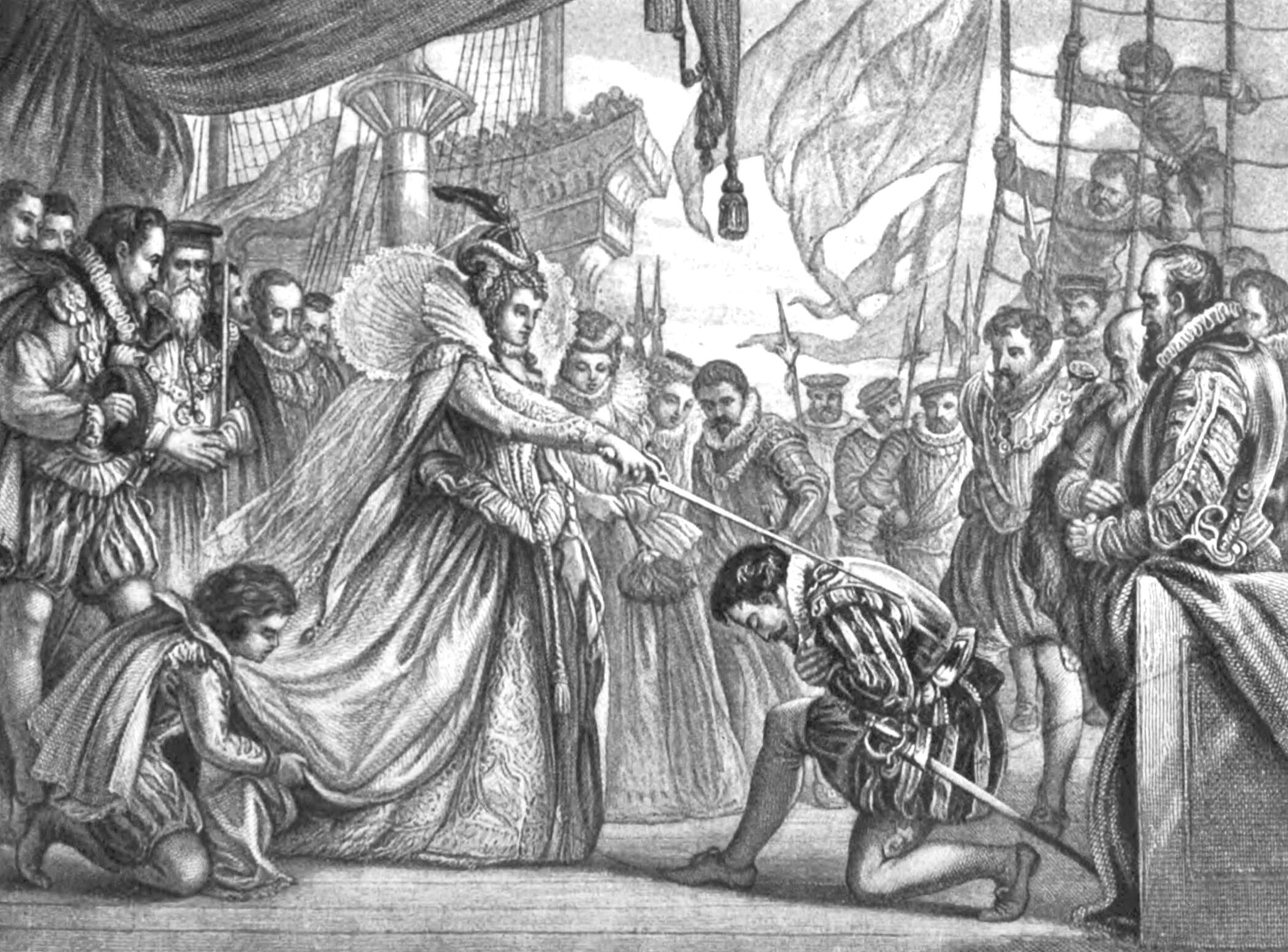
British Colonial America
Colonization would soon grind to a halt after a costly war developed between the British and the Spanish in 1585. At this time, the British, following the lead of the Spanish and French decided to privatize the colonization by issuing licenses and monopolies to private investors. Most considered the licenses to be a big gamble. The only investors were from the southwestern England, and they were called the “West Country Men.” This group of promoters included Sir Walter Raleigh, Sir Francis Drake, Sir Richard Grenville, Sir John Hopkins, and Sir Humphrey Gilbert. All of them believed that they would get rich in the New World. They were also very interested in spreading Christianity.
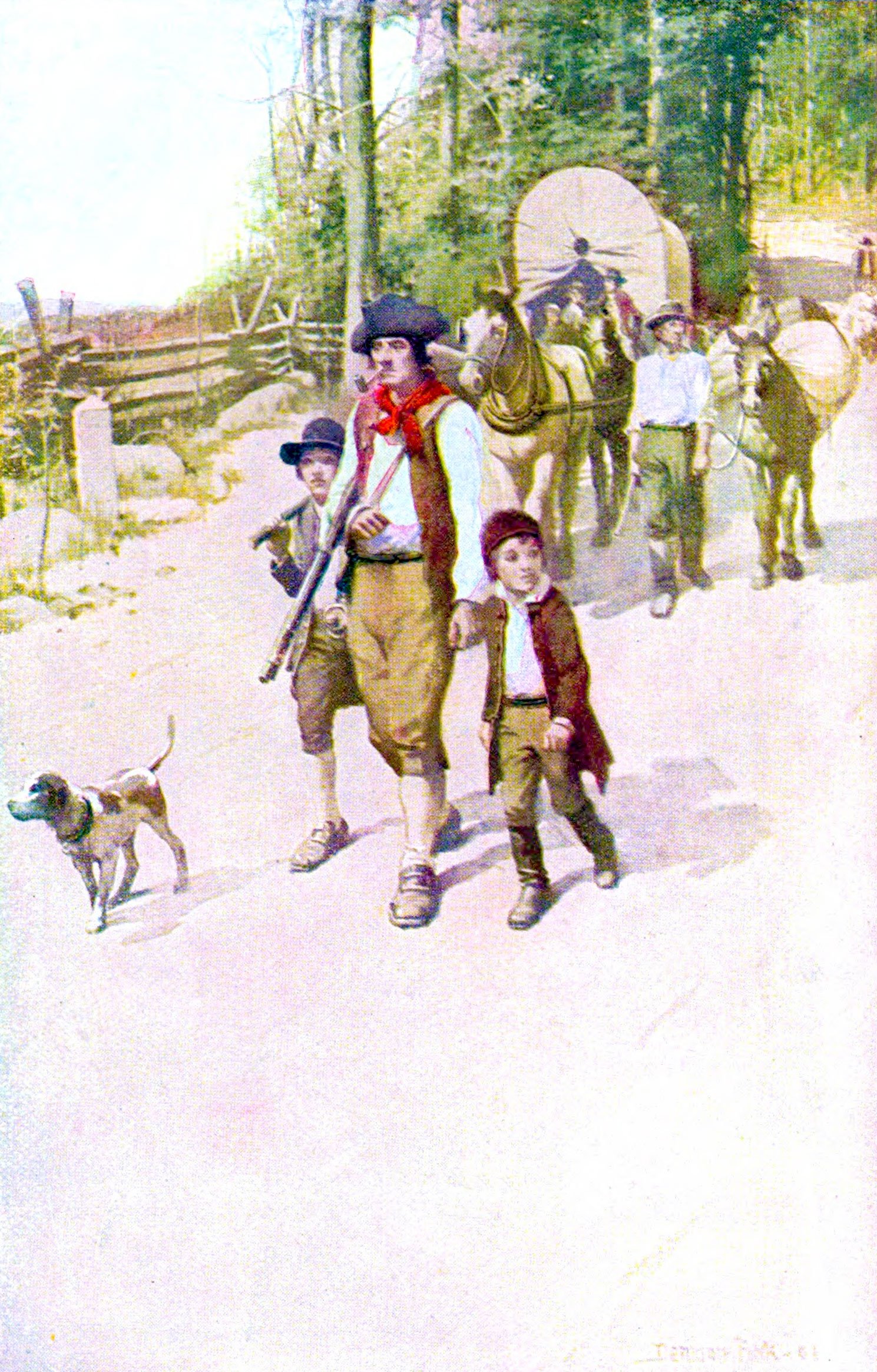
Colonial American Epidemics
Unfortunately, the very first emigrants to Hispaniola failed to grow enough food and they became vulnerable to sickness, disease and malnutrition. Consequently, almost 2/3rds of the first settlers were dead in the first 10 years. The native Taino people suffered even more because their people would be devastated by exposure formally unknown European diseases. The diseases which included small pox, typhoid, diphtheria, malaria, cholera, bubonic plague, and influenza were unknown in the New World. The Europeans had been exposed to the diseases for centuries and they had built up a resistance to their effects. However, the Native Americans had no such resistance. The diseases had a horrible effect, scaring and killing huge amounts of population.

French Colonial America
The French colonists discovered the commodities of furs and fish. Soon afterward, they set up a trading post in Tadoussac at the mouth of the St. Lawrence River, making alliances with many of the surrounding tribes. These tribes included the Micmac, Montagnats, and the Algonkin, and they supplied the French traders with a steady stream of beautiful furs.
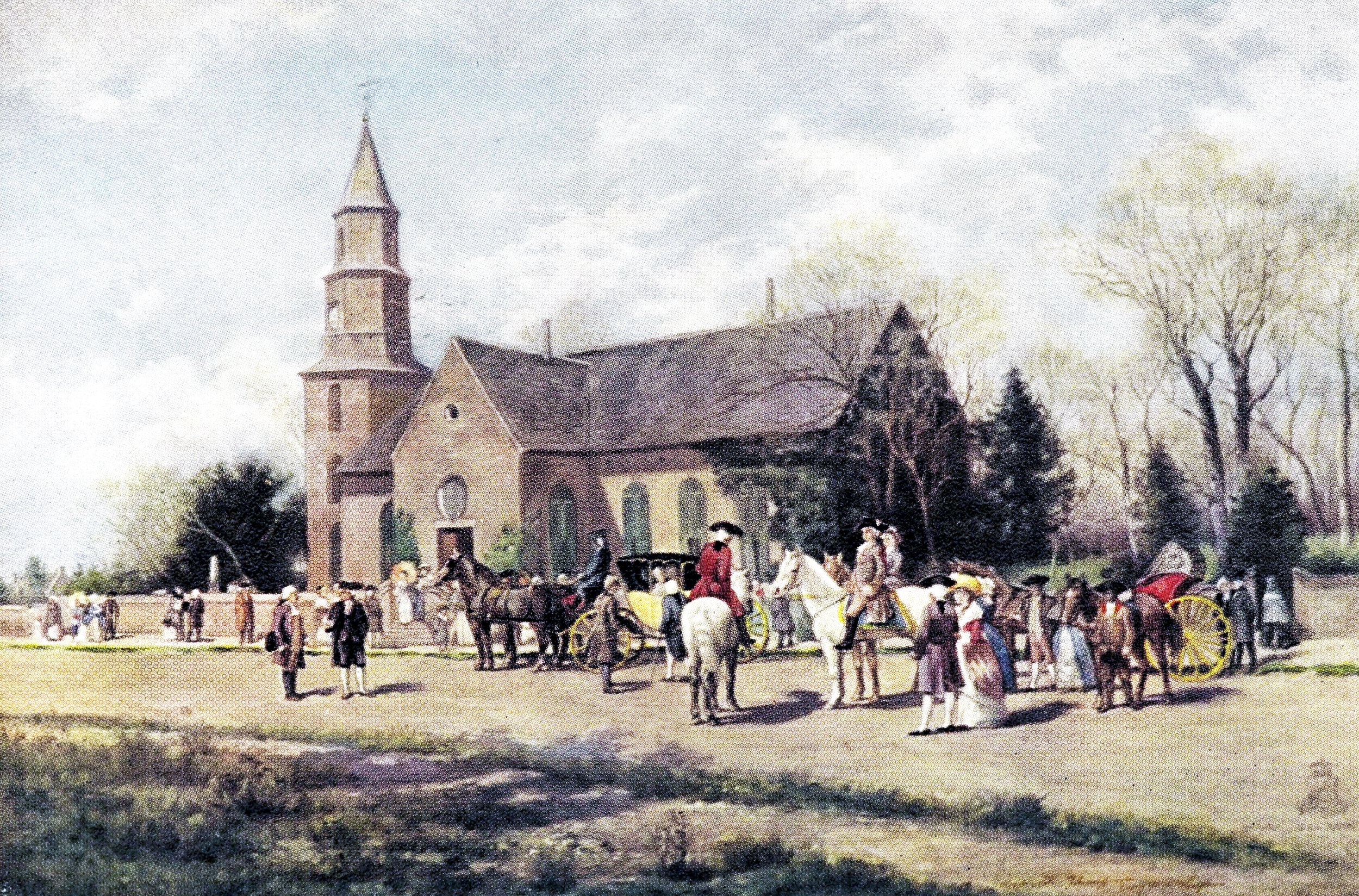
Great Awakening
During the mid-1700's, British Colonial America became engulfed in religious revivals that collectively became known as the Great Awakening. The revivalists emphasized a religious conversion that transformed sinners into saints, while providing eternal salvation. The revivalists believed that only God's grace could save the sinner. It was the job of the evangelical preacher to take a seeker through the dept of despair and then pull them into an ecstatic experience of divine grace. Energetic ministers preached sermons that shocked the parishioner into recognizing that they were headed to impending “Hell.” At the same time they told them that if they sought salvation they could find eternal joy in heaven. They called this movement “New Birth.”
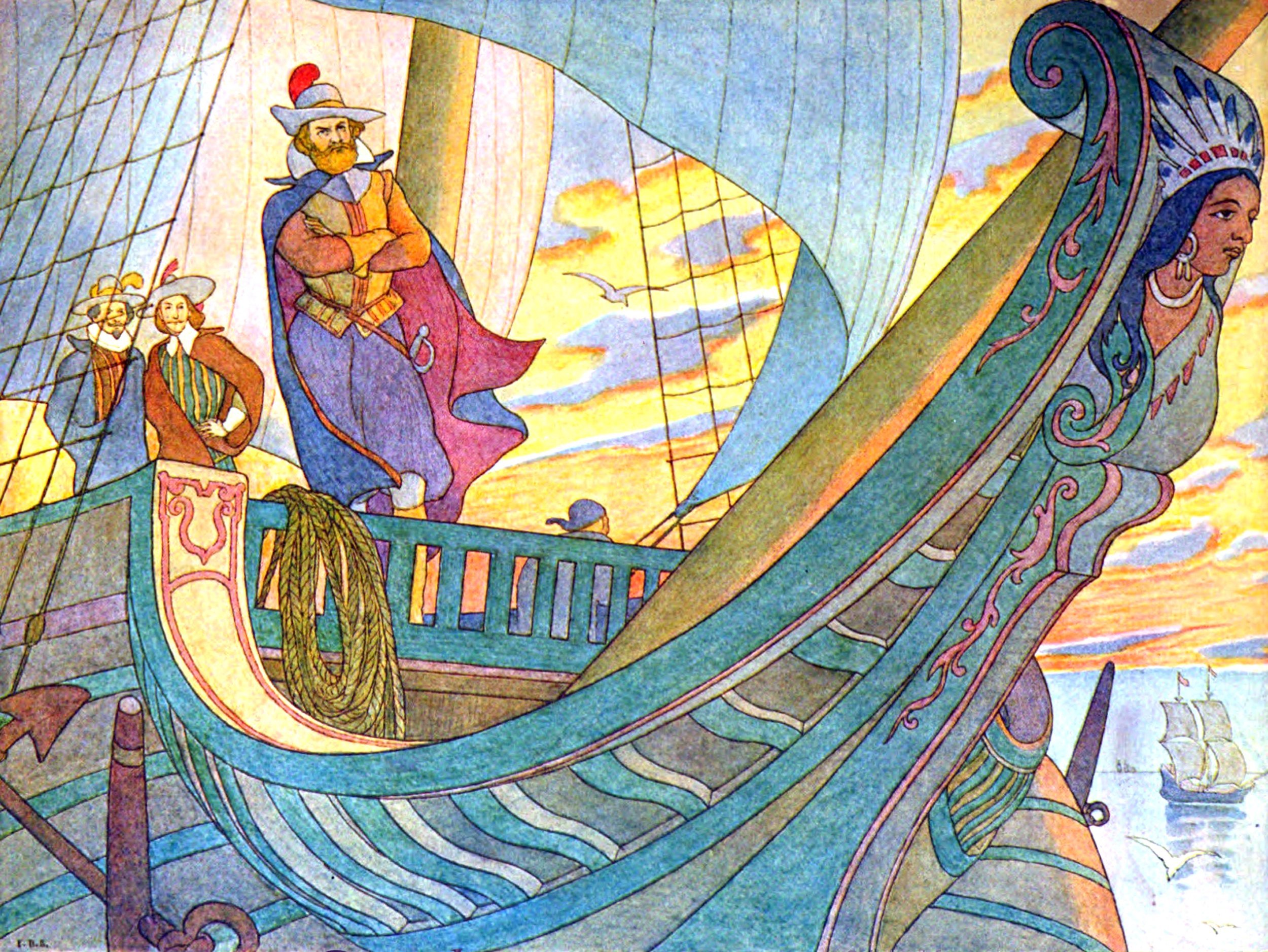
John Smith
In 1606, a group of investors incorporated the Virginia Company, and soon afterward King James I granted them a charter to establish the colony of Virginia. The same year, John Smith joined the group of Englishmen that sailed across the Atlantic Ocean and established the colony of Jamestown. After landing in Jamestown, in April of 1607, John quickly emerged as a capable leader. Unfortunately, he and the first colonists faced horrendous hardship.

John Winthrop
Before the ship sailed the future colonists elected him to become the first governor of the Massachusetts Bay Colony. Winthrop was now in charge of the first great wave of new emigrants to leave England for New England. Prior to this time only the Plymouth Colony settlement existed. Winthrop was joined on the trip by his 2 sons, Stephen and Samuel. They boarded a ship named the Arbella and left Southhampton, England on March 22, 1630. The Arabella reached Salem, Massachusetts 70 days later. Before long, a total of 11 boats left Southhampton with more than 700 people. Winthrop decided that they should move the colony to better location called Shawmut. Eventually, Shawmut became the city of Boston, an important port city and the capital of Massachusetts.
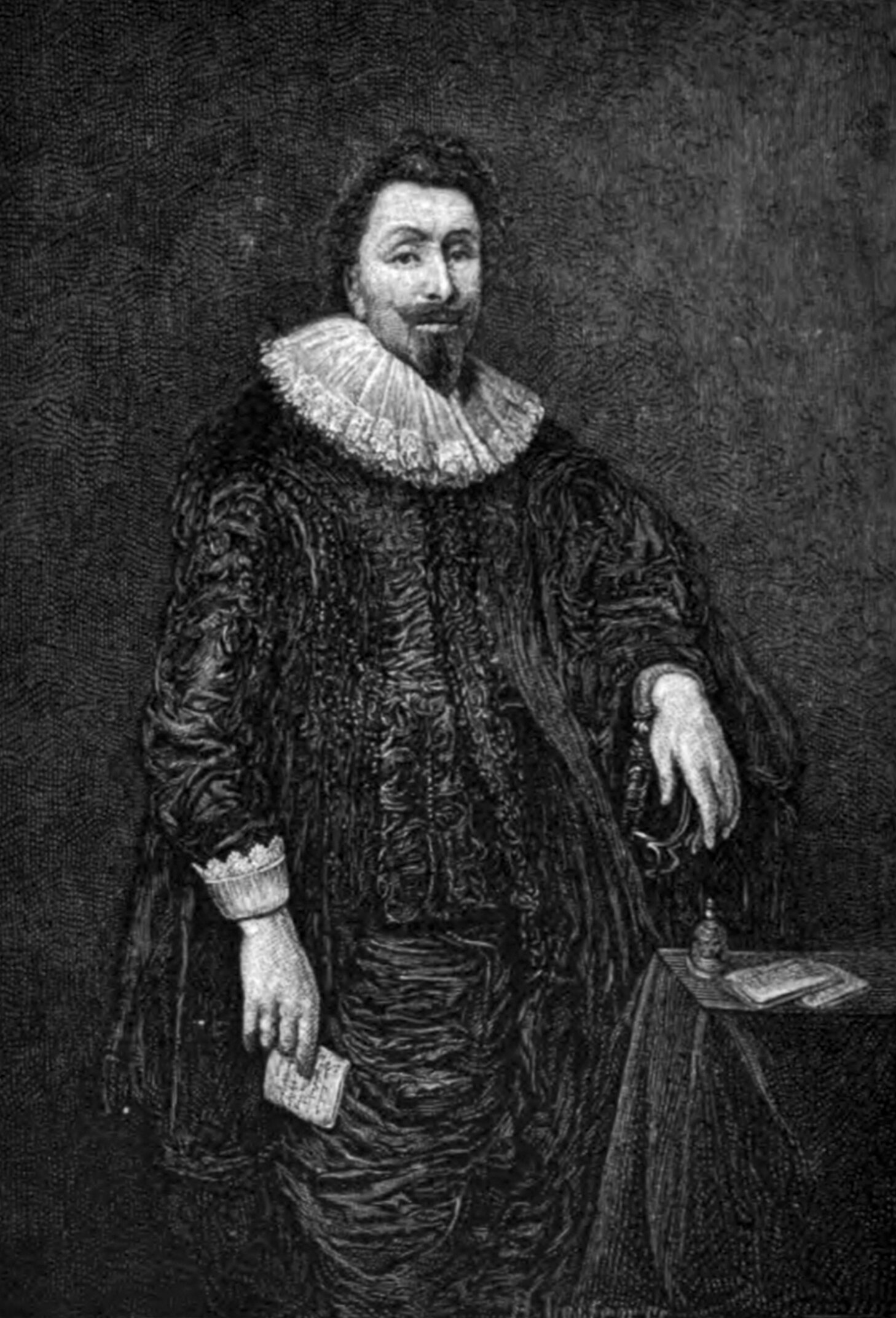
Lord Baltimore
The first Lord of Baltimore was George Calvert. His son, Cecilius Calvert was the second Lord Baltimore. He was born in Kent, England, on August 8, 1605. His mothers name was Anne Mayne, and little is known about her. George and his family converted to the Roman Catholic religion in 1625. At that time the Catholics were facing a tremendous amount of persecution in England. The first Lord Baltimore promoted religious tolerance. He decided the the English Roman Catholics should establish a colony of their own in the New World. The first Lord Baltimore asked King James I for the charter for a new colony. However, he would die before the colony was granted. Then in 1632 the son of King James, Charles I, awarded the second Lord Baltimore with 12 million acres of land. The colony included the western shore of Chesapeake Bay, and it was named after the Queen Consort Henrietta Maria. It was to be called Maryland. The king liked Lord Baltimore's plan of religious tolerance. Both the king and Lord Baltimore believed that Catholics and Protestants could live together.

Puritans and the Thirteen Colonies
The first group of Puritans to migrate to New England were called Separatists, and they were later referred to as Pilgrims. In 1620, 102 of them crossed the Atlantic on the ship named Mayflower. They established a town called Plymouth on Massachusetts Bay. Luckily, the Native Americans in the area had been wiped out by an epidemic, and the colonists were able to occupy their village. The first winter was especially hard, and half of the people starved or died from the bitter conditions. In the following years they would learn to grow an abundance of crops. In 1630, there were 1,500 Puritans living in Plymouth colony.
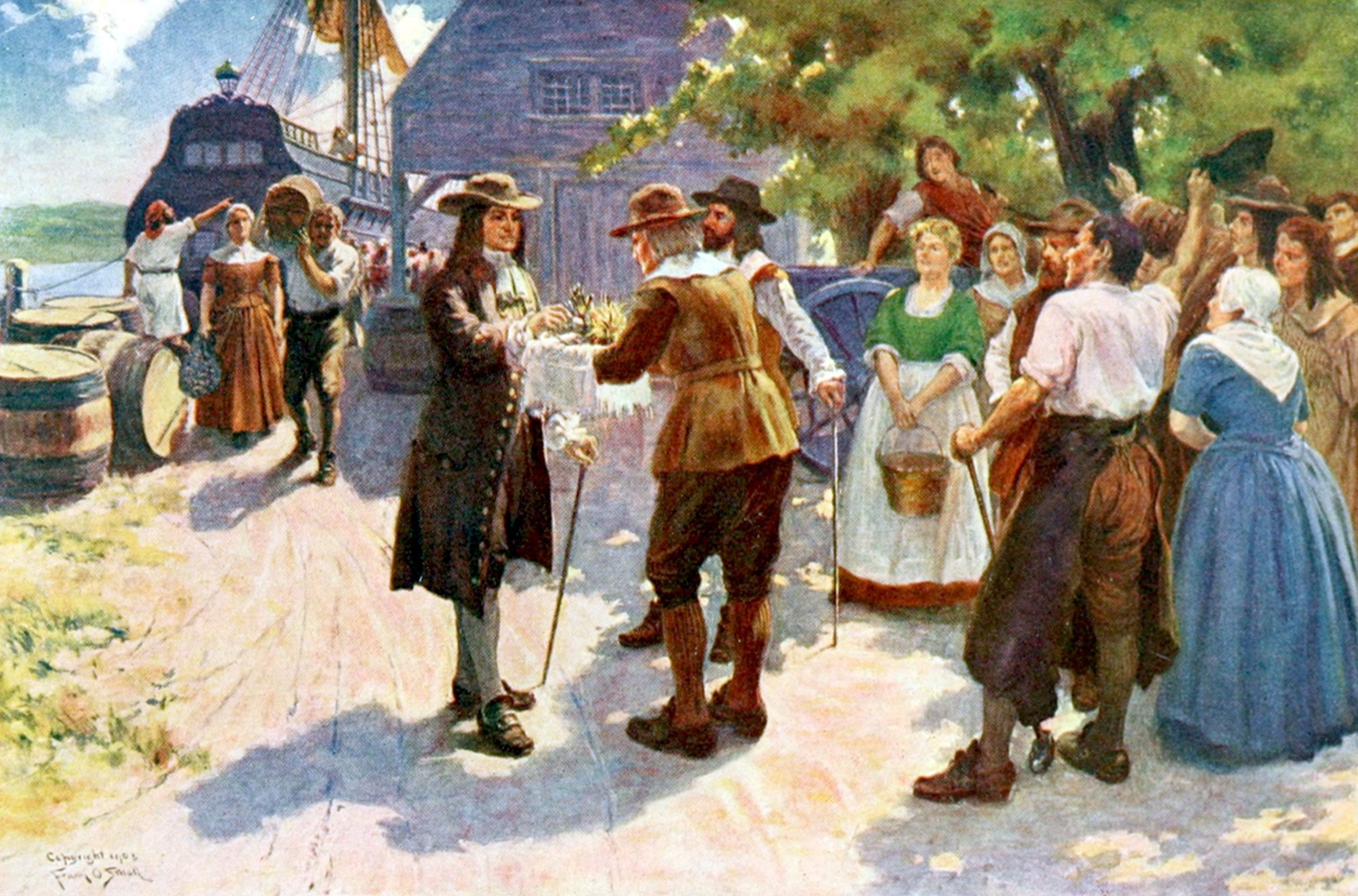
Quakers and Pennsylvania
The Quaker movement was inspired by the teachings of George Fox. In 1647, Fox began preaching publicly in fields, in town squares, and anywhere else that he could, and it didn't take long before he was attracting followers. His sermons highlighted the dangers of drinking and issues of morality and they came straight from the Bible. Fox was effective because he linked his sermons to his everyday experiences. Before long he became very politically active as he and his followers attempted to turn England into a republic. They interrupted church services across England inviting prosecution. Fox and his followers believed that they needed to challenge political hierarchy and formal churches to hasten the Second Coming of Christ and his 1,000 year Kingdom on Earth. His followers were jailed, whipped, and fined by local magistrates by the thousands because they refused to give the churches money, would not take oaths of allegiance, and insisted on publishing their unorthodox views.

Roger Williams
Roger believed that an individual should be allowed to worship whatever religion they wanted to worship. Williams also advocated for the total separation of church and state. Shortly afterward he became the first advocate for the freeing of all slaves. Needless to say, it wasn't long before his views got the attention of the leaders of the Massachusetts Bay Colony. At first they tried to get him to change his position and keep quiet. Then finally, they gave up and banished him from the colony in 1635. Homeless, Roger Williams wandered aimlessly throughout southeastern Massachusetts until he was welcome by Chief Massasoit. Then in April of 1636, Chief Massasoit sold Roger land and he started building the city of Providence. He called it Providence because he believed that it was “God's Providence” that had brought him there. Roger believed that he could establish a colony in Providence where people would be able to worship according to their own views.

Spanish Colonial America
The New World drew almost a quarter of a million emigrants to the Americas during the 16th century. Most were from Castile, Spain, and they came by way of the port of Seville. At the time, almost all of the Spanish ships that traded with the Americas came by way of Seville. Many who left for the New World did so because of the lack of opportunities in Spain. At first, the vast majority of emigrants were young single men because most women did not believe that the journey across the Atlantic Ocean was safe. During the 1570's more women began to make the crossing. At this time approximately 1/3rd of the population were women. Due to the perpetual lack of women, the men began to intermarry. They took wives and girlfriends that were Native American. The children of these people became known as mestizos. Consequently, by 1700 there were more mestizos living in Mexico than there were Indians.
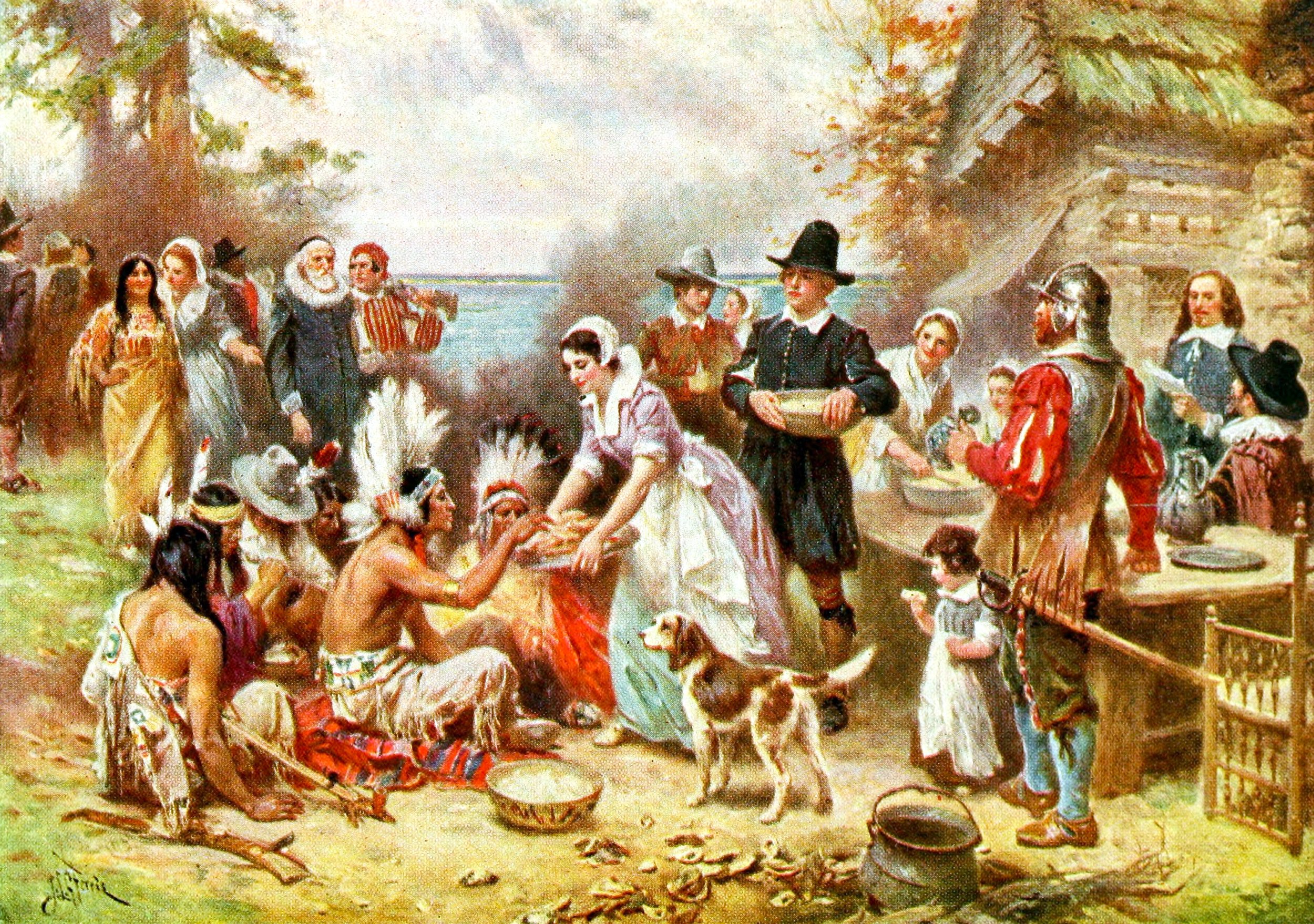
William Bradford
William was born in 1590, to William Sr. and Alice Bradford. His family owned a beautiful farm in Austerfield, Yorkshire, England. At the time of his birth they were well off financially. However, Williams father would die when he was only 1 year old. His mother then remarried when he was 4 years old and he was raised by his grandfather. His grandfather lived 2 more years, and soon afterward his mother died leaving him an orphan at age 7. William was then raised by 2 uncles who wanted him to work on the farm, but he chose to read the Bible and classic works of literature instead.
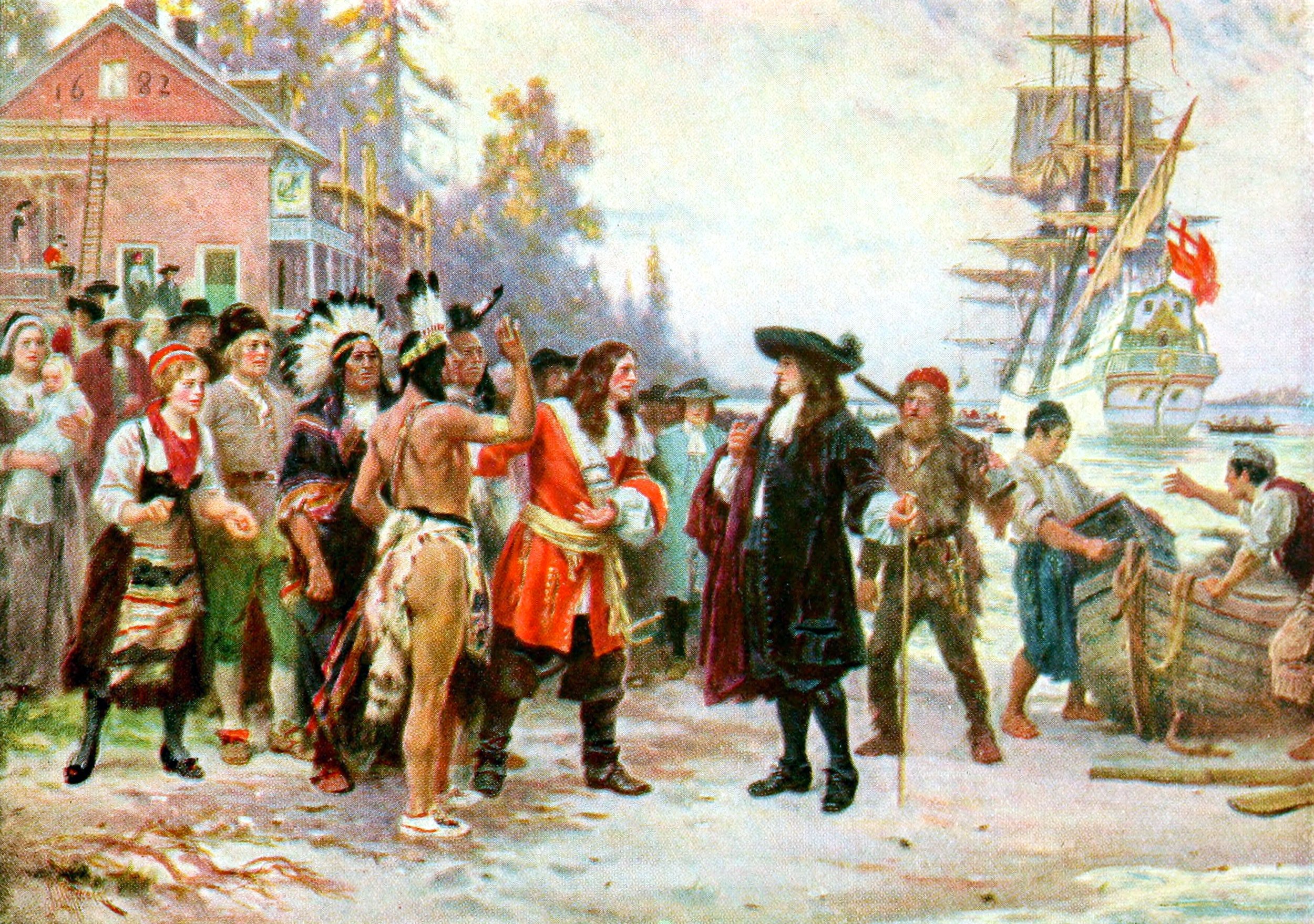
William Penn
Before long, William Penn Jr. became an advocate for both democracy and religious freedom. Soon, he began hearing stories about the New World and he longed for his own colony in America. Eventually his wish would come true when the king agreed to grant the younger Penn 45,000 square miles west of the Delaware River on condition that the older Penn canceled a debt of $30,000 that the government owed him. This area included what would eventually become the states of Pennsylvania and most of Delaware. As much as Penn was in favor of getting rich, he was also very serious about the promotion of his own faith. While he promised a “Free Colony” religiously, he still expected the new immigrants to pay him for their land as well as pay an annual tax.
